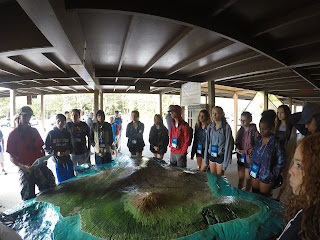UCSD GELS Hawai'i

In this GELS program, students work with University of Hawai’i Hilo faculty and researchers from the Pacific Aquaculture and Coastal Resources Center (PACRC) and the Marine Analytical Laboratory to explore the diverse ecosystems and climate zones of the Big Island of Hawai'i and are exposed to how the island thrives ecologically, economically, culturally and socially. PACRC provides the infrastructure to support world-class aquaculture, marine science, and conservation biology programs at UH Hilo. The Center actively conducts interdisciplinary research and development in coastal areas throughout the world. It has two primary facilities: a 12-acre coastal site at Keaukaha, adjacent to the port of Hilo, and an inland site at Panaʻewa, six miles away. The Keaukaha facilities include a water quality laboratory, mollusk hatchery and marine fish hatchery. The primary purposes of the Panaʻewa site are health management and integrated agriculture-aquaculture far...




